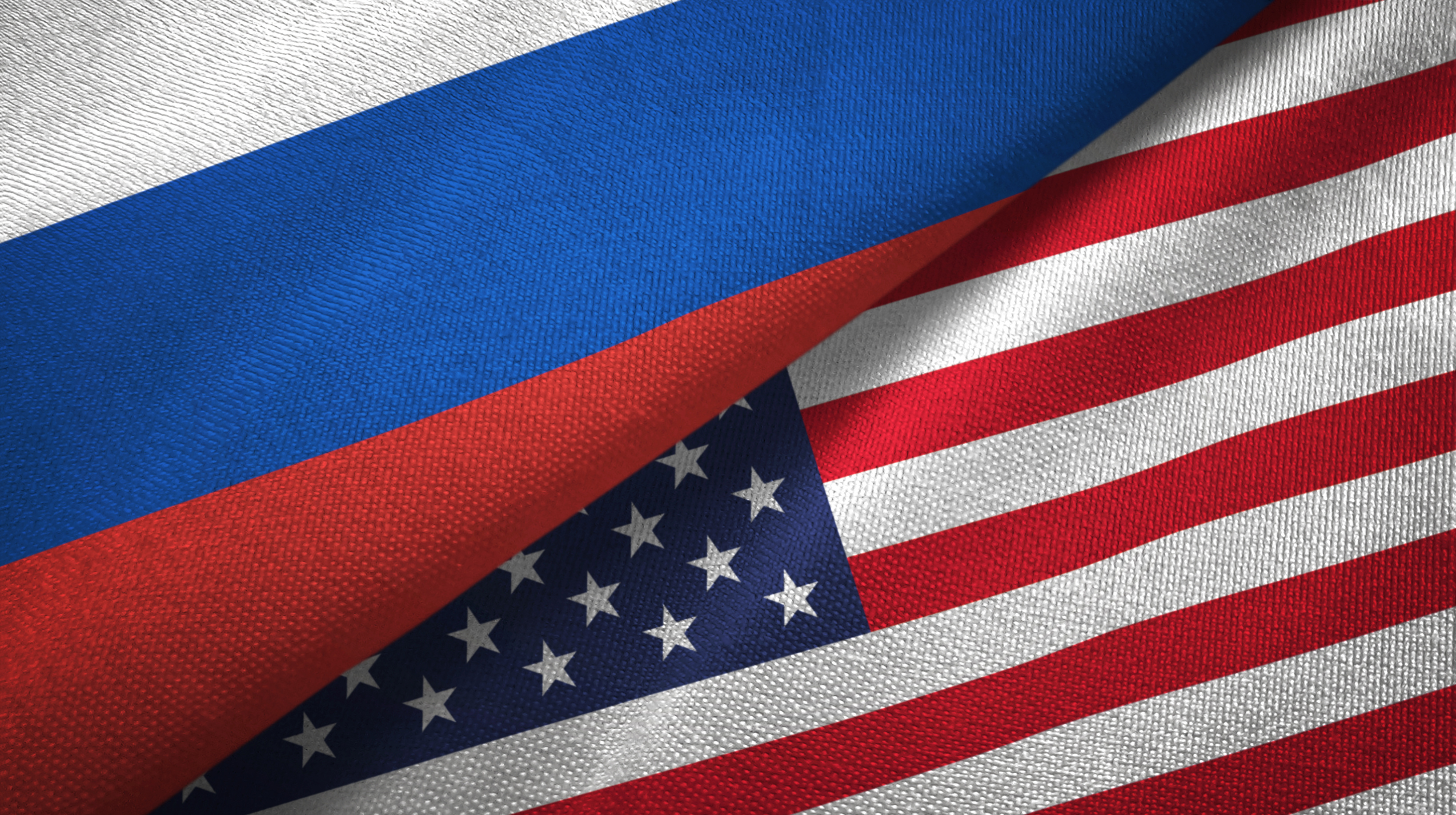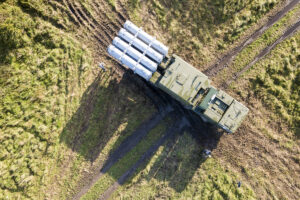American participants in the meeting included General (ret.) George W. Casey, General (ret.) Curtis M. Scaparrotti, Ambassador Karl W. Eikenberry and General (ret.) John P. Abizaid.
Russian participants included Lieutenant General (ret.) Evgeny P. Buzhinsky, Major General (ret.) Vladimir Z. Dvorkin, and Major General (ret.) Pavel S. Zolotarev.
In his opening remarks, Stimson’s President and CEO, Brian Finlay, noted that the dialogue is an integral part of the Stimson Center’s commitment to fostering mutual understanding and productive discussions between the US and Russia. The meeting was moderated by Stimson senior staff members: Bruce McConnell, Distinguished Fellow; Vladimir Ivanov, Adjunct Senior Fellow; and James Siebens, Fellow.
The participants discussed and debated a range of issues, including: the main causes of the Ukraine conflict; the ultimate aims of Russia’s military actions; the threat of NATO enlargement as viewed by Russia; the status of US involvement in the conflict and the impact of Western military assistance to Ukraine on the conflict; the proposed incorporation of Donetsk, Luhansk, Kherson and Zaporizhzhia regions into Russia; and, the possibility of Russia using nuclear weapons.
The American and Russian participants generally agreed on the following:
- The Ukraine conflict is entering a period of potential escalation, when the opportunities for miscalculation and risk are increasing. The most urgent tasks are to prevent escalation of the conflict and enable negotiations to begin. The content of the eventual negotiations is hard to predict as they will largely be determined by the military developments in the battlefield.However, the longer the military actions continue, the worse it will be for all sides, as well as for international security more broadly.
- Given the continuous Western support to Ukraine on the one hand and the buildup of the Russian capabilities on the other hand, a war of attrition is a very likely scenario. This will mean the exhaustion of resources of those involved, which will lead to a worsening risk of escalation, accompanied by the exacerbation of global energy and food crises, as well as a range of possible regional and global security problems. A war of attrition leads nowhere, and all sides should do their best to prevent this outcome.
- The threat of a nuclear war is as great now as it was during the Cuban Missile Crisis – in terms of the length of crisis, rhetoric, lack of communication and readiness to negotiate. Current nuclear rhetoric is doing more harm than good and should be abandoned by all sides.
- Both the American and the Russian nuclear doctrines state exceptional circumstances which may permit the first use of nuclear weapons. These exceptions may give way to arbitrary interpretations with dangerous outcomes. Both sides should exercise greater clarity and restraint in their declared nuclear policies.
- The nuclear powers should have a very high bar for the use of nuclear weapons and should not lower it. No distinction should be made between strategic and tactical nuclear weapons in terms of their permissibility. Both are equally dangerous in their destructive power and their capacity to trigger a nuclear exchange; thus both should be unacceptable.
- The reduction of a nuclear risk should be the foremost responsibility of the US and Russia. There can be no limited nuclear war between the two superpowers or between any other international players with such capabilities; it cannot be controlled and would only lead to guaranteed mutually assured destruction. Thus a nuclear war must never be fought.
- Strategic stability talks between the US and Russia are of utmost importance. While the talks on New START have been put on hold, the absence of other treaties such as ABM or Open Skies is a major vulnerability in the context of the current security environment.
- Russian participants suggested that a non-nuclear and non-bloc Ukraine and fewer NATO troops on/near their borders would be important conditions in the negotiations.
The participants proposed the following ways forward:
- The US and Russia should aim to make their intentions clear to each other, including through a high-level bilateral dialogue as well as through non-official channels to discuss how to end the war in Ukraine. Different bilateral communication formats dedicated to problem solving that were successfully functioning during and after the Cold War should be revived and adjusted to the current reality. For this to work, efforts should be made towards rebuilding mutual trust. The military of both countries have an important role to play in this.
- The system of strategic stability between the US and Russia is still functioning and the basic principles are working – this is a good foundation to build on. The New START treaty should serve as basis for establishing trust and furthering bilateral talks. The mutual inspections regime under the New START that has been temporarily suspended should be revived. For this, in particular, it is necessary to resolve organizational issues related to financial and visa support for the activities of inspection teams.
- The two sides should also start consultations on the parameters of a new treaty that will follow the New START. A new treaty would be beneficial to both parties.
- Since both the US and Russia are engaged in the resolution of the Iranian nuclear deal, which has been showing positive signs of revival, this can serve as a platform where the two countries could work together. Efforts should be made towards aligning the positions of the US and Russia on this deal.
- There are major security issues related to the outer space, including the threat of deployment of nuclear weapons. Bilateral efforts in this area could be used to develop a common code of conduct.
- The US and Russia should get together to discuss a functional security architecture for Europe, with viable problem solving mechanisms that will help avoid dangerous escalation risk in the future.
The participants emphasized the importance of maintaining such Track 2 dialogues in particular for understanding each side’s positions and intentions, addressing the differences of views, reducing misperceptions, fostering mutual understanding and finding common ground. The dialogue aims to contribute to bringing forth constructive solutions to security issues which the world urgently needs.
The US-Russia Military-to-Military dialogue is made possible by the generous support of Carnegie Corporation of New York. The project was initiated by the EastWest Institute in 2020 and transferred to the Stimson Center in 2021.



